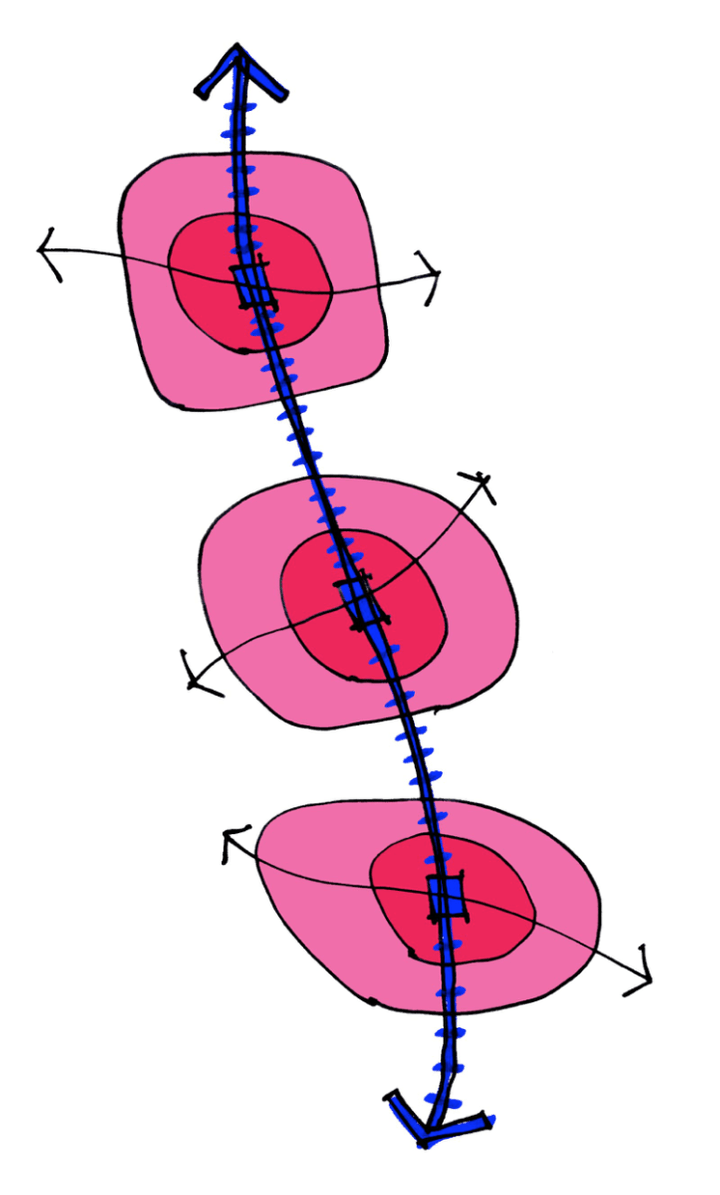
DESIGN PROJECTS CAN CHANGE OUR CITIES

KELVIN GROVE URBAN VILLAGE
Pioneering Government-led mixed-use knowledge precinct
The Village is a radical mixed-use precinct closely integrating new elements of an urban university with a range of retail, office, high school, recreational and community uses plus a significant amount of affordable rental and market purchase housing. This multi-award-winning renewal project on brownfield land close to the Brisbane city centre was from 1998 conceived, championed and then urban-design-led by John. The $2 billion project, which has won many awards at the state and national levels from the many professions and industries contributing to it, is based around a new pedestrian and public transport friendly mainstreet closely connecting into its existing neighbourhood. Delivered by an innovative partnership between state housing agency and university, it has become a significant exemplar in urban planning and knowledge-based precinct design.
Project in brief:
- AUD $2bn brownfield development project
- Conceived 1998, Master-planned 1999-2003, Constructed since 2003
- Innovative government/university partnership leading to many public and private investments
- Redefined an integrated urbanist approach to inner urban precinct design and planning
Radically redefined the relationships of a C21 university with its city
PROJECT AWARDS RECEIVED
- Planning Institute of Australia (2001 - Excellence in Urban Planning, 2002 - National Award for Urban Planning Achievement, 2003 - National Excellence in Planning, 2004 - National Excellence in Environmental Planning)
- Australian Institute of Landscape Architects (2003)
- Urban Development Institute of Australia (2002)
- Environmental Protection Agency, Queensland Government (2004)
- Queensland Premier’s Awards (2003 - Sustainable Environment)
- Engineers Australia (2004 - Qld Inaugural Award for Sustainability, 2004 - National Environment Award)
- Australia Council for Educational Administration (2004)

CRIME PREVENTION THROUGH ENVIRONMENTAL DESIGN
Guidelines for Queensland: Essential Features of Safer Places
This 2007 Queensland Government publication was the first Australian state government CPTED document to attempt to up-skill city-making professions and industries towards safer urban outcomes by dealing in the language and values of those groups. As author and principal designer of this radically different and then award-winning document, formally led by the Queensland Police Service, John sought to break down barriers between security-focused and city-creating silos and build an informed partnership. The Guidelines, which also addressed the impact on CPTED thinking of changes across society, continue to be a strong educational and training tool and an element included in current statutory land-use planning policy. The full guidelines can be accessed here: https://www.police.qld.gov.au/programs/cscp/safetyPublic/Documents/CPTEDPartA.pdf
Project in brief:
Radically translated CPTED thinking into the language of planning, design and development professions and industries.
- Continues as the contemporary expression of safer place policy strategies.
PROJECT AWARDS RECEIVED
- Planning Institute of Australia (2001) State Award for Excellence

QUEENSLAND URBAN SOCIAL HOUSING
Award-winning Solutions for Social Fabric Challenges
From 1992, for a decade, John was the central directing force inside the state housing agency behind the rapid re-invention of design and planning approaches for the Queensland Government’s development of subsidised rental housing for low-income citizens. The radical transformation of the housing program, with negotiated policy support and in creative association with the design professions, delivered housing that was diverse, sensitive to its immediate location, dignified and open to personalisation, passively sustainable, cost-effective and a contributor to community well-being and safety. The winner of awards from various professions and governments, the dramatically different program both changed approaches by the private sector to market housing and the attitudes of more affluent communities to the inclusion of such social housing in their midst.
Project in brief:
Dramatically transformed the design and planning quality of a myriad of projects in the major urban housing program of more than 10,000 dwellings.
- Award-winning cost-effective design set benchmarks for other developers.

STRATEGIC DESIGN ADVISER ON TRANSIT ORIENTED DEVELOPMENT
Advanced People-oriented Design Skills
Based on long experience in integrating transit into urban centres and neighbourhoods, John continues to act as adviser to the state transport and planning agencies on the design and planning of development projects invited from the private sector around existing transit nodes. Recent examples for the Queensland Government’s Department of Transport and former Office of Urban Management include
the integration by design of new light rail infrastructure with a major new public hospital and an existing university campus on the Gold Coast
Master-planning of a new mixed-use precinct called Varsity Station Village in association with a new rail/bus station on the Gold Coast
a major retail and residential project in association with a future bus transit tunnel at middle-urban Coorparoo
an urban mainstreet-based collection of new retail and residential buildings adjacent to the existing outer-urban rail station at Ferny Grove
an urban place-creation project of residential, office, hotel and recreational developments around and over the inner-urban rail station at Albion.
In each project, the enhancement of the amenity of transit has been sought through the strong creation of people-oriented public space holding together newly dense development, providing new civic hearts to the existing or future local communities.
Project in brief:
Strong pursuit of the principles of Transit Oriented Development in three very different urban contexts.
Each project requiring complex negotiations with the private developers on design and financial issues, balancing short and long term outcomes.
Copyright 2018 (C) byrne.urbandesign
A member of the NeuroPower Group of companies




